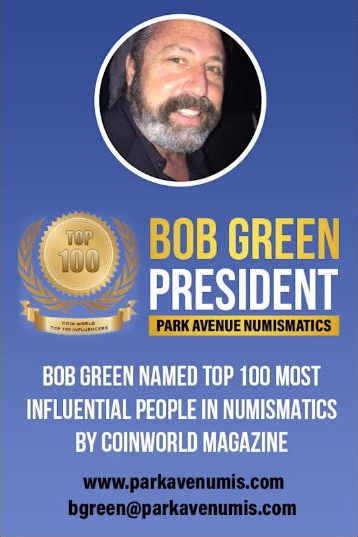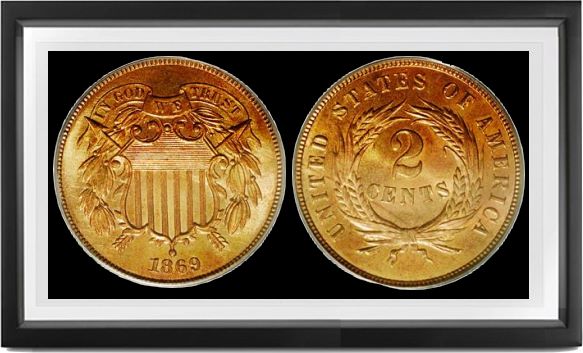Park Avenue Numismatics
5084 Biscayne Blvd, Suite 105
Miami, FL 33137
Toll Free: 888-419-7136
Secure Private Ordering
We use the latest online security processing,
so your order is safe & private.
We DO NOT disclose any customer
information to ANY third party company.
Our customer privacy is our priority.
Over 30 Years Experience
Park Avenue has over 30 years
experience buying and selling
Rare Coin and Precious Metals.
We have the knowledge and
ability to provide our customers
with the best products and services.




THE TWO CENT PIECE

IN 1806, AND AGAIN IN 1836, proposals were made to Congress to authorize billon (copper with some silver admixture) two cent pieces; the former proposal was quashed at once when the then Mint Director, Robert Patterson, sent Congressman Tracey a couple of planchets of the proposed alloy together with a common brass button, showing that counterfeiters would have an easy time imitating the general appearance of the alloy. The 1836 proposal (60-grain coins, 1/10 silver, 9/10 copper) was quite another story, and for some months Gobrecht and Franklin Peale experimented with the idea, pickling some of the pieces in acid, silver plating copper pieces of the same design, etc. These experiments satisfactorily established that the alloy could be easily imitated by counterfeiters, and the project was dropped, not to recur in any form until 1863.
Mint Director James Pollock wrote to Secretary of Treasury Salmon P. Chase on Dec. 8, 1863, proposing a 2-cent piece of the same French bronze alloy as the new cents were to be, and submitted samples of two designs, one with a Washington head, the other with shield and arrows in saltire, crested by wreath and motto scroll, recommending the latter. Secretary Chase concurred, recommending that a new motto be used—IN GOD WE TRUST, rather than GOD OUR TRUST—possibly influenced by the motto of his old alma mater, Brown University, IN DEO SPERAMUS—"In God we hope". The proposal became law April 22, 1864. A few of the earliest Proofs, and a few thousand business strikes, were from the pattern die with small letters in motto, April 1864; about ten Proofs are known, compared with over 100 with large motto.
In 1865, as with the cent, two different styles of date occur on the 2-cent pieces; that with plain 5 is found on Proofs and business strikes, that with fancy (double curved top) 5 is found on business strikes only, a very few showing overdate, 1865/64. Re-cut dates are known for most years through 1871.
Some 1867's occur with plain doubling ("shifting") on motto; these are rare but not extremely so. Fewer than a dozen 1869/68's are traced to date.
Business strikes of 1872 mostly occur in Good or VG, and they are much rarer than the Proofs, Several Uncirculated specimens have been reported, but to date all I have examined turned out to be somewhat dulled Proofs. It is known that some of this date—Proofs and probably business strikes as well—were among the obsolete unsold coins melted July 10, 1873.
The final year, 1873, consists entirely of Proofs, some of them very dull like the 1864-65 issue. Closed and open 3's exist, the closed 3 minted with the sets (600) less a quantity melted July 10, 1873, the open 3 made at some unknown later time and generally called re-strikes. The open 3 is considerably rarer. I have seen only one obverse die of each type to date, but three or four different reverses, only one of which (with a closed 3 obverse) is a left-over die of 1872, suggesting mintage on several occasions. The series is grossly underrated in comparison to some others.












